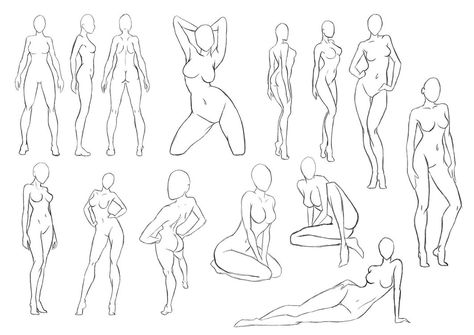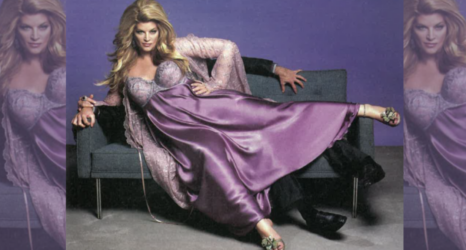It was recently brought to my attention that my characters are obsessed with bodies—their own and everyone else’s.

The observation embarrassed me, but perusing the work in question, I had to agree. Numerous sentences are devoted to descriptions of bodies, to what characters think about their own bodies and to how they perceive other people’s bodies.
“Her private parts were concealed, but to Tasha Jane’s entire body was one massive private part.”
“Her bottom swayed under loose gray sweatpants. She wasn’t fat, but everything about her had relaxed, become loose and acquiescent to gravity.”
“She had the telltale skin of a redhead; with the slightest wisp of emotion in the air—her own or anyone else’s—blood rushed to her doomed vessels like water to a Bangaladeshi flood plain.”
“After they made love, drowsing in the sheets, he would pinch the skin of his belly, grimacing in self-disgust. When he stroked her bottom, she could feel him measuring her too, for self-control and strength of character.”
These sentences seem to me to fall into the expected purview of a writer. In fact, they seem somewhat tame—especially these days when every writers’ conference in the country has at least one panel or workshop devoted to “writing the body.”
But apparently, even in 2020, there is something suspect, even shameful, about devoting too much page time to the body—despite the fact that we all conduct our lives from within a body.
As babies we are squarely situated in physical functions—eating and sleeping and defecating—and at life’s end we are also usually fixated on our bodies—I say this with some authority as a former hospice volunteer.
But during the long middle section of our lives, we’re sucked into shame if we pay too much attention to our corporeal selves.
If we are writers, we are educated to value primarily what lives inside our minds. In her essay “On Being Ill” Virginia Woolf writes:
“Literature does its best to maintain that its concern is with the mind; that the body is a sheet of plain glass through which the soul looks straight and clear, and, save for one or two passions such as desire and greed, is null and negligible and non-existent.
“On the contrary, the very opposite is true.”
I don’t think it’s a stretch to say that most of us think about our bodies frequently throughout the day, and not only when we’re sick. We take note of our hunger, our fleeting pains, our exhaustion, our itching, our sweating, our need to urinate or defecate or fornicate. This awareness of the body and its needs and urges, its pleasures and pains, follows us into the work place and home again; it is an unavoidable aspect of human life.
Twenty-first century writers are significantly less body-aversive than they were in Virginia Woolf’s day. A quick mental search brings to mind many contemporary writers who are unafraid to explore the intense physicality of being human: Lidia Yuknavitch, Ottessa Moshfegh, Garth Greenwell, Ocean Vuong, to name a few.
These writers, and many others like them, do not shy away from addressing masturbation, blood, excrement, vomit, sweat, semen and so on. They refuse to ignore the fact that living in a body is often harrowing, while also being a fundamental part of the human condition.
Coming from New England, which has a long tradition of prudishness, I doubt if I will ever be as body-bold as these writers. But I’ve been body-observant for years—perhaps because my mother loved her own body. She was proud of reporting to us the death-defying feats her body had undertaken and survived unscathed: Once, on a dare, she jumped from a cliff into the ocean wearing a yellow evening gown she hated; another time, she leapt from a moving jeep whose brakes had gone out to avoid a collision with an oncoming train.
Throughout her life, my mother was a champion of skinny-dipping, and when my sisters and I were young, she used to take us outside to dance naked in summer rainstorms. I loved the mischief of our nakedness; I loved watching the rhythmic bobbing of my mother’s breasts as she danced.
When she drove me places, I studied her hands on the steering wheel. They were long-fingered, ropey. I could see their inner workings in the burled knuckles, the fanning tendons, the berm of muscle beneath her thumb. When her hands moved, their planes shifted, rippling the skin. Those hands were so complicated, compared to my formless ones. Throughout her life she relished the things her body could do. When she was well into her eighties she called me one Sunday morning. “I had two orgasms, I walked for two miles, and I swam for ten minutes,” she announced proudly.
My father, a thoughtful introvert, was situated more in his mind more than his body, but when I was an adolescent, he made a comment about bodies that has always stuck with me. The men who were really successful, he said, those who become CEOs, were all tall men with deep voices. He worked in publishing and was, by most measures, a “successful” man, but he was not as tall as he would have liked to be, and a native timidity made him gentle rather than commandeering. I have been testing the veracity of his comment for years, and it seems to check out.
The body we’re given at birth may not determine everything, but it often determines a lot. Size, skin color, where the culture deems us to be on the scale of attractiveness—these things permeate our sense of who we are and who we are likely to become.
So much about my own life has flowed from the body I had as a child. I was small and short and thin. I wore glasses and my hair was usually cut short in a “pixie” cut.
As adolescence came on, I remained flat-chested and didn’t get my period until I was fifteen. I thought boys were immature and uninteresting, and I had a group of close female friends who felt the same way. We may have been outcasts of a sort, but we didn’t feel that way. Because there was no one interested in getting a piece of me or my body, there were no distractions from the central job of becoming myself. I often wonder how that would that have been different if I’d had a more attractive or developed body.
Our bodies are constantly sending out messages to signal who we are, or who we’d like to be, as well as what we feel. Some are conscious messages related to grooming—the buzz cut, the dreadlocks, the blue hair, the camo outfit, the business suit, the leggings—and some are messages conveyed through the language of facial expressions and body movement that is so innate and primal we are scarcely aware of the messages we’re sending. From an early age, as a matter of survival, we become adept at interpreting these dispatches from others. We learn how to read dozens of nonverbal cues that help us understand who might be a threat and who might be a lover or an ally.
I am acutely aware of active nonverbal communication in the yoga studio I attend. It is hot yoga, so we wear scant clothing. Our mats are within a foot or two of each other and we are supposed to look at ourselves in the mirror throughout class, unveeringly.
But, because we are human, we do look at each other, not staring if we can help it, but observing as much as we can through stolen glances. We scope out possible affiliations and decide who is best avoided. We take note of the details of each other’s bodies. We’re like animals sniffing each other out. No, we are animals, and perhaps we also have something in common with trees who communicate through their roots.
When I first came to the studio, the proximity of so many nearly naked bodies shocked me. But, having practiced there for a number of years, I am now struck by how that experience gives rise to intimacy—intimacy that has nothing to do with exchanged words and which extends beyond the yoga room. When I spot another yoga student on the street, I greet them warmly, even when I’ve never talked to them and don’t know their name. Our bodies in proximity have shared something, communicated obliquely, making us part of a tribe.
A similar communication happened with my mother in the years before she died. She was widowed and had moved into a retirement community. We had had a fraught relationship for many years, but I had finally established myself in a life I wanted, and this helped me relax around her.
On my visits, I began massaging her feet. She would lie on the couch and place her feet in my lap. Those feet, with their long toes and high arches, bore witness to her athletic past. They were feet that had leapt and danced and balanced well. But like any feet, they had weathered. She had bunions. Her toenails had thickened and yellowed as if they were on their way to becoming fossils. I stroked with considerable pressure and tugged her toes. She closed her eyes and purred in ecstasy. It was such a simple, nonverbal way to bring her pleasure and it connected us to the deep love we’d always had for each other, even in conflict, our mutual admiration. I came to look forward to those sessions when our bodies demanded détente.
I started writing this essay defensively, trying to justify the fascination with bodies that appears in my fiction. I’ve moved beyond that. Now I wonder why everyone doesn’t share my fascination with bodies and their language. Now I’m an advocate for writing about bodies from every angle possible. The body tells us things we might not otherwise know, and for the fiction writer, it’s an essential element of understanding character.





